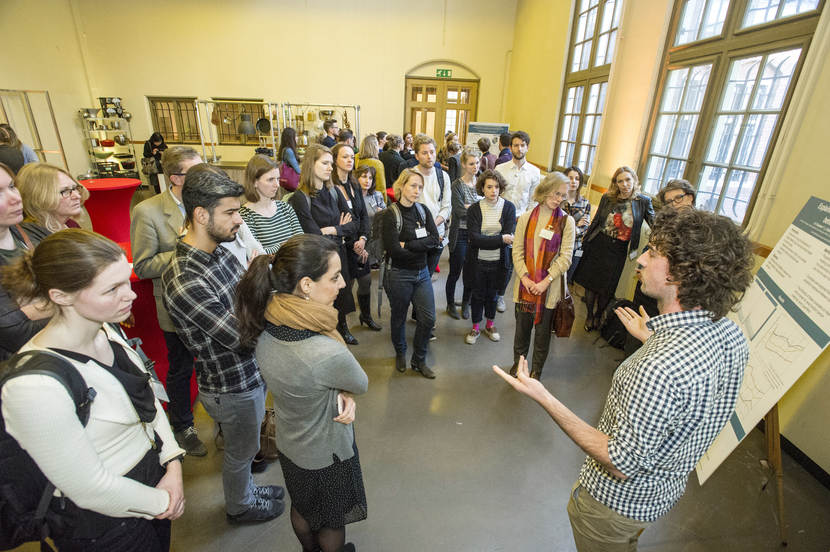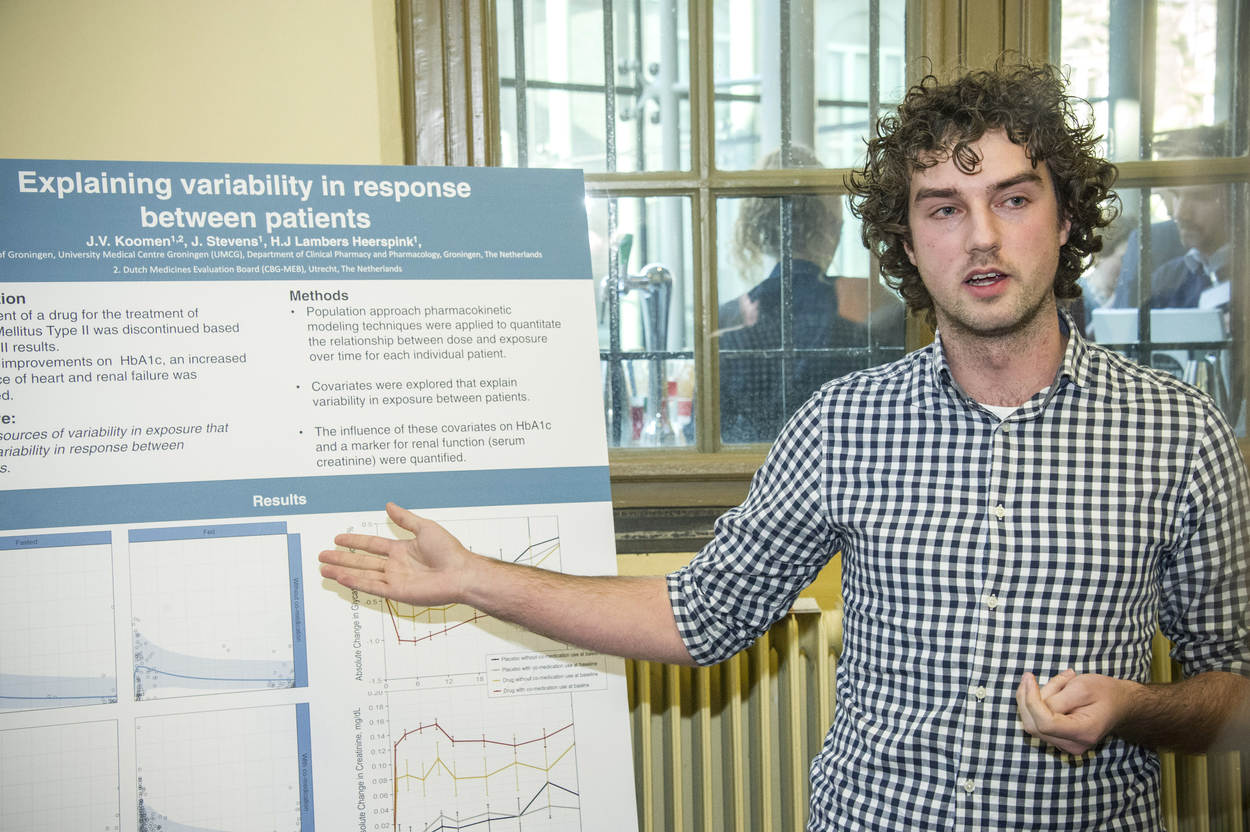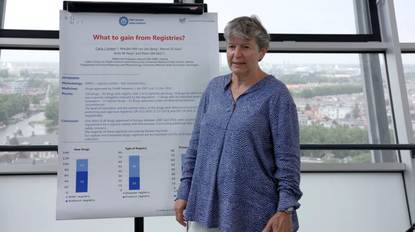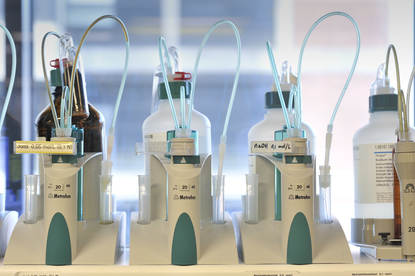Regulatory science provides the Medicines Evaluation Board (MEB) with up-to-date data, knowledge and expertise based on current scientific insights, for optimal evaluation and marketing authorisation of medicinal products and novel foods.
The studies that support the MEB's regulatory process are very diverse. The MEB Regulatory Science programme presents several studies as a Poster Pitch.
Poster Pitch by J.V. Koomen, MSc
Jeroen Koomen presents his study on explaining variability in response between patients.
This study demonstrates that co-medication and food intake could explain variability between patients in this phase III study.
(The MEB's logo. On-screen title: Poster pitch by J.V.Koomen, MSc. On-screen text: Explaining variability in response between patients.)
MAN'S VOICE: My PhD project is about explaining variability
in response between patients,
and mainly in patients with type 2 diabetes.
So, in this particular project, I looked at a drug that was intended
for a treatment for type 2 diabetes,
but was failed after the outcome of a large Phase 3 study.
And in the study, they saw a lowering of HbA1c,
which is a marker for glucose lowering,
but they also saw an increased incidence of heart failure and renal failure.
Our objective in this project was
to quantify the variability in exposure between patients,
to look at the response between patients.
So, we used the population pharmacokinetic approach to identify covariates
that could explain variability in exposure,
and that is displayed in this graph over here.
In this graph, you can see the observations of the patients and the modal overlay.
And as you can see, there are four graphs,
so we identified food intake and comedication as covariates
in a population pharmacokinetic model.
So, we then looked at the pharmacodynamic response on HbA1c
and on serum creatinine, which is a marker for renal function.
And as you can see, the placebo groups do not differ from each other,
but patients who used the study drug with comedication
had an additional lowering of HbA1c and an additional decrease in renal function.
So, in conclusion,
we identified comedication and food intake as covariates
that could explain variability in response between patients.
And we showed that the comedication
was the cause for an additional lowering of HbA1c,
however at the expense of an additional worsening of the renal function.
And questions remain: should we, as a regulator, ask companies to identify causes
that could explain variability in response between patients?
(The MEB's logo, next to: Medicines Evaluation Board.)










